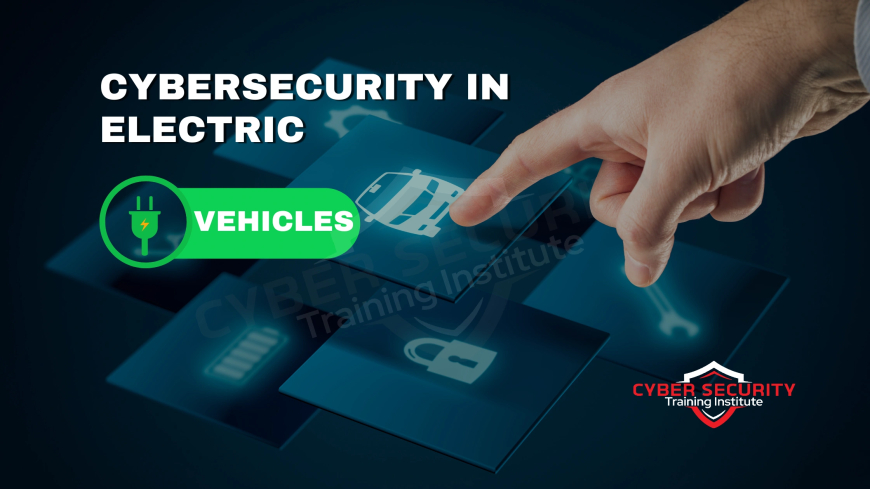The Hidden World of Cybersecurity in Electric Vehicles (EVs)
Imagine cruising down the highway in your sleek electric vehicle (EV), enjoying the quiet hum of the motor and the promise of a greener future. Now, picture this: a hacker thousands of miles away gains access to your car’s systems, manipulating its navigation or even disabling the brakes. Sounds like a scene from a sci-fi thriller, right? Unfortunately, as EVs become smarter and more connected, this scenario is a real concern. The hidden world of cybersecurity in electric vehicles is a critical yet often overlooked aspect of the automotive revolution. In this blog post, we’ll peel back the layers of this complex topic, exploring why cybersecurity matters for EVs, the risks involved, and how the industry is working to keep drivers safe.

Table of Contents
- Why Cybersecurity Matters for EVs
- How EVs Are Vulnerable to Cyberattacks
- Real-World Incidents and Lessons Learned
- The Industry’s Response to EV Cybersecurity
- The Future of EV Cybersecurity
- Conclusion
- Frequently Asked Questions (FAQs)
Why Cybersecurity Matters for EVs
Electric vehicles are no longer just cars; they’re rolling computers packed with advanced technology. From touchscreen infotainment systems to over-the-air (OTA) software updates, EVs rely on complex networks to function. These systems make driving more convenient and efficient, but they also create new entry points for hackers.
Unlike traditional gas-powered cars, EVs are deeply connected to the internet, mobile apps, and even charging stations. This connectivity allows features like remote climate control, real-time navigation, and vehicle diagnostics. However, every connection is a potential vulnerability. A single weak link could allow a hacker to access critical systems, putting drivers, passengers, and pedestrians at risk.
Cybersecurity in EVs isn’t just about protecting your personal data, like your navigation history or payment information. It’s about ensuring the safety of the vehicle itself. A compromised EV could malfunction, leading to accidents or even loss of life. As EVs become more common, the stakes are higher than ever.
How EVs Are Vulnerable to Cyberattacks
EVs are packed with technology, and each component can be a target for cyberattacks. Let’s break down the key areas where EVs are at risk:
- Infotainment Systems: The touchscreen in your EV is more than just a fancy dashboard. It’s a gateway to the car’s internal network. Hackers could exploit weaknesses in the software to gain access to other systems.
- Over-the-Air Updates: OTA updates allow manufacturers to fix bugs or add features remotely. However, if a hacker intercepts or manipulates an update, they could install malicious software.
- Charging Stations: Public charging stations are convenient but can be compromised. A hacker could use a charging port to inject malware into your EV’s system.
- Mobile Apps: Many EVs come with apps that let you lock, unlock, or start your car remotely. If the app or its server is hacked, someone could gain control of your vehicle.
- Vehicle-to-Everything (V2X) Communication: EVs communicate with other vehicles, traffic signals, and infrastructure to improve safety and efficiency. These connections could be exploited to send false signals or disrupt operations.
The following table summarizes the vulnerabilities and potential risks:
| Component | Vulnerability | Potential Risk |
|---|---|---|
| Infotainment System | Weak software security | Access to vehicle controls, data theft |
| OTA Updates | Unsecured update process | Malware installation, system disruption |
| Charging Stations | Compromised hardware/software | Malware injection, power disruption |
| Mobile Apps & Server | Insecure authentication | Remote vehicle control, data breach |
| V2X Communication | Unencrypted signals | False data injection, traffic accidents |
Real-World Incidents and Lessons Learned
While EV cyberattacks sound like something out of a movie, they’ve already happened. In 2016, researchers demonstrated that they could remotely hack a Tesla Model S, controlling its brakes and other functions from miles away. Tesla quickly patched the vulnerability, but the incident highlighted how real the threat is.
Another case involved a popular EV brand’s mobile app, which allowed hackers to unlock and start vehicles due to weak authentication protocols. In 2022, a teenager claimed to have hacked multiple Tesla vehicles worldwide, exposing flaws in their software update system. These incidents show that no system is foolproof, and manufacturers must stay vigilant.
The lessons are clear: manufacturers need to prioritize security from the design phase, regularly update software, and work with cybersecurity experts to identify weaknesses. For consumers, these incidents are a reminder to keep their vehicle’s software up to date and be cautious about connecting to unsecured networks or charging stations.
The Industry’s Response to EV Cybersecurity
The automotive industry is stepping up to address these challenges. Here’s how:
- Secure Design: Manufacturers are adopting “security by design,” meaning cybersecurity is built into the vehicle from the ground up. This includes encrypting data and isolating critical systems like brakes and steering from less secure ones like infotainment.
- Regular Updates: OTA updates aren’t just for new features; they’re critical for patching security holes. Companies like Tesla and Rivian push updates frequently to stay ahead of hackers.
- Collaboration: Automakers are working with cybersecurity firms and even ethical hackers to test their systems. Initiatives like the Auto-ISAC (Information Sharing and Analysis Center) allow companies to share threat information.
- Standards and Regulations: Governments are stepping in with regulations like the UNECE WP.29, which sets cybersecurity standards for connected vehicles. These rules push manufacturers to prioritize security.
- Consumer Education: Manufacturers are starting to educate drivers about safe practices, like avoiding public Wi-Fi for vehicle apps and keeping software updated.
While these efforts are promising, the industry is still playing catch-up. Hackers are constantly evolving, and automakers must stay one step ahead to protect drivers.
The Future of EV Cybersecurity
As EVs become more advanced, so will the cybersecurity measures protecting them. Here are some trends to watch:
- Artificial Intelligence (AI): AI can detect unusual activity in a vehicle’s systems, like a hacker trying to access the brakes, and respond in real time.
- Blockchain Technology: Blockchain could secure OTA updates and V2X communication by creating tamper-proof records of data exchanges.
- Zero-Trust Architecture: This approach assumes no system or user is inherently trustworthy, requiring constant verification to prevent unauthorized access.
- Quantum Cryptography: As quantum computing advances, it could revolutionize encryption, making EV systems nearly unhackable.
However, the future isn’t without challenges. As EVs integrate with smart cities and autonomous driving systems, the attack surface will grow. Collaboration between automakers, governments, and tech companies will be crucial to stay ahead of threats.
Conclusion
The hidden world of cybersecurity in electric vehicles is a fascinating and critical frontier. As EVs become more connected, the risks of cyberattacks grow, but so do the opportunities to innovate and protect. From infotainment systems to charging stations, every component must be secured to ensure driver safety and privacy. The industry is responding with secure designs, regular updates, and new technologies, but the battle against hackers is ongoing. By staying informed and cautious, drivers can play a role in keeping their EVs safe. The road to a secure electric future is complex, but with collaboration and innovation, we can keep the wheels turning safely.
Frequently Asked Questions (FAQs)
Can someone really hack my electric vehicle?
Yes, EVs are vulnerable to cyberattacks due to their connected systems, but manufacturers are working to secure them with updates and encryption.
What happens if my EV gets hacked?
A hacked EV could have its navigation, brakes, or other systems manipulated, potentially leading to accidents or data theft.
Are public charging stations safe to use?
Most are safe, but compromised stations could inject malware. Stick to reputable chargers and avoid suspicious ones.
How do OTA updates affect my EV’s security?
OTA updates fix security vulnerabilities but must be encrypted to prevent hackers from installing malicious software.
Can my EV’s mobile app be hacked?
Yes, if the app or its server has weak security, hackers could gain remote access to your vehicle.
What is V2X communication, and why is it a risk?
V2X lets EVs communicate with other vehicles and infrastructure. Unsecured signals could be intercepted, causing accidents.
How can I protect my EV from cyberattacks?
Keep software updated, avoid public Wi-Fi for apps, and use strong passwords for your vehicle’s accounts.
Are all EVs equally vulnerable to hacking?
No, vulnerability depends on the manufacturer’s security measures. Research your EV’s cybersecurity features before buying.
Has anyone died from an EV cyberattack?
No fatalities have been reported, but incidents have shown the potential for serious harm.
Do gas-powered cars have the same cybersecurity risks?
Gas-powered cars with connected features face similar risks, but EVs have more attack points due to their advanced tech.
What is “security by design” in EVs?
It means building cybersecurity into the vehicle’s systems from the start, like encrypting data and isolating critical components.
Can hackers steal my personal data from my EV?
Yes, data like navigation history or payment info could be stolen if the system is compromised.
Are Tesla vehicles more secure than other EVs?
Tesla has strong cybersecurity measures, but no vehicle is immune. They’ve faced hacks but respond quickly with patches.
What role does AI play in EV cybersecurity?
AI can detect and respond to suspicious activity in real time, improving a vehicle’s defenses.
Is blockchain used in EV cybersecurity?
Not widely yet, but blockchain could secure OTA updates and V2X communication in the future.
What are governments doing about EV cybersecurity?
Governments are setting standards like UNECE WP.29 to ensure manufacturers prioritize cybersecurity.
Can I disable my EV’s internet connection?
Some EVs allow limited connectivity settings, but disabling the internet may limit features like navigation or updates.
Are autonomous EVs more vulnerable than regular EVs?
Yes, autonomous EVs rely on more complex systems, increasing the number of potential attack points.
How often should I update my EV’s software?
Install updates as soon as they’re available to patch security vulnerabilities and improve performance.
What should I do if I suspect my EV has been hacked?
Contact your manufacturer immediately, disconnect the vehicle from the internet if possible, and have it inspected.
What's Your Reaction?
 Like
0
Like
0
 Dislike
0
Dislike
0
 Love
0
Love
0
 Funny
0
Funny
0
 Angry
0
Angry
0
 Sad
0
Sad
0
 Wow
0
Wow
0















